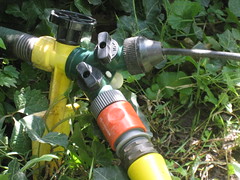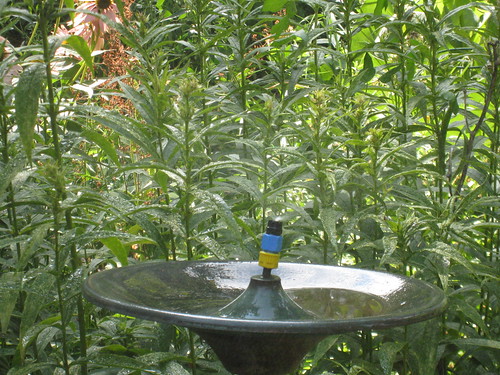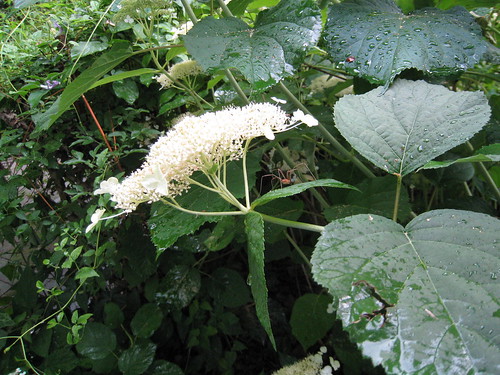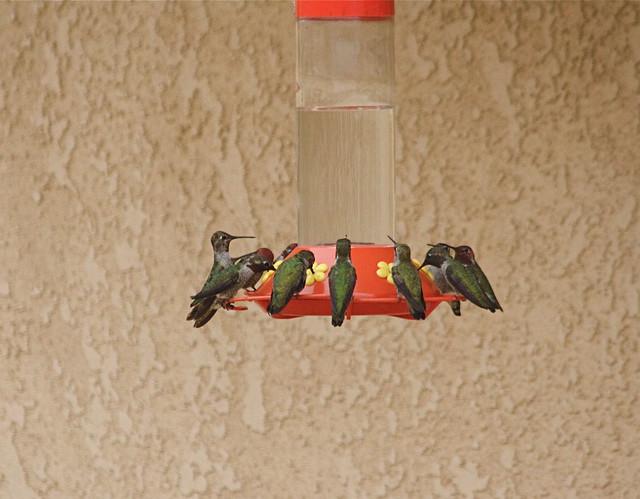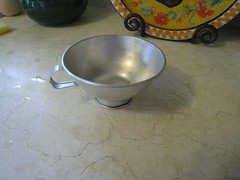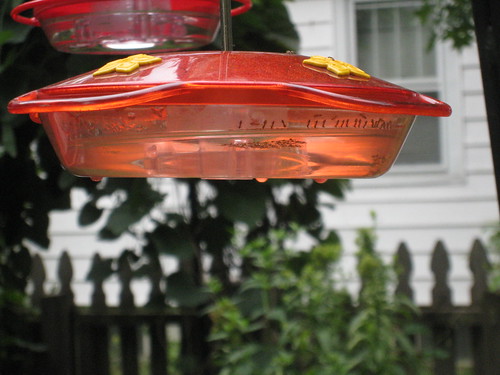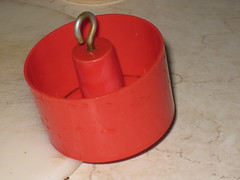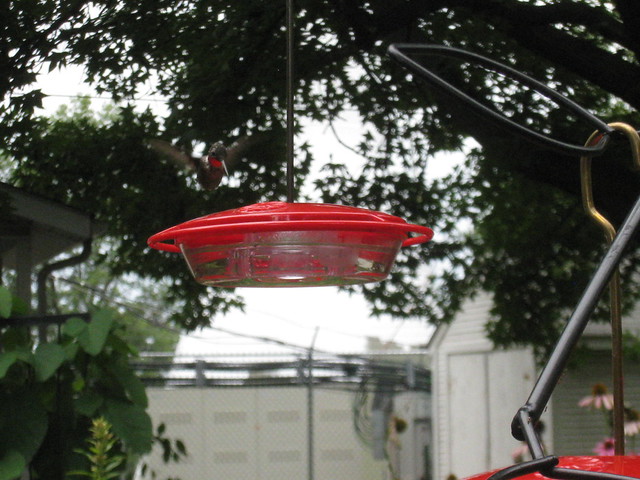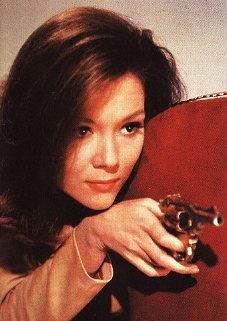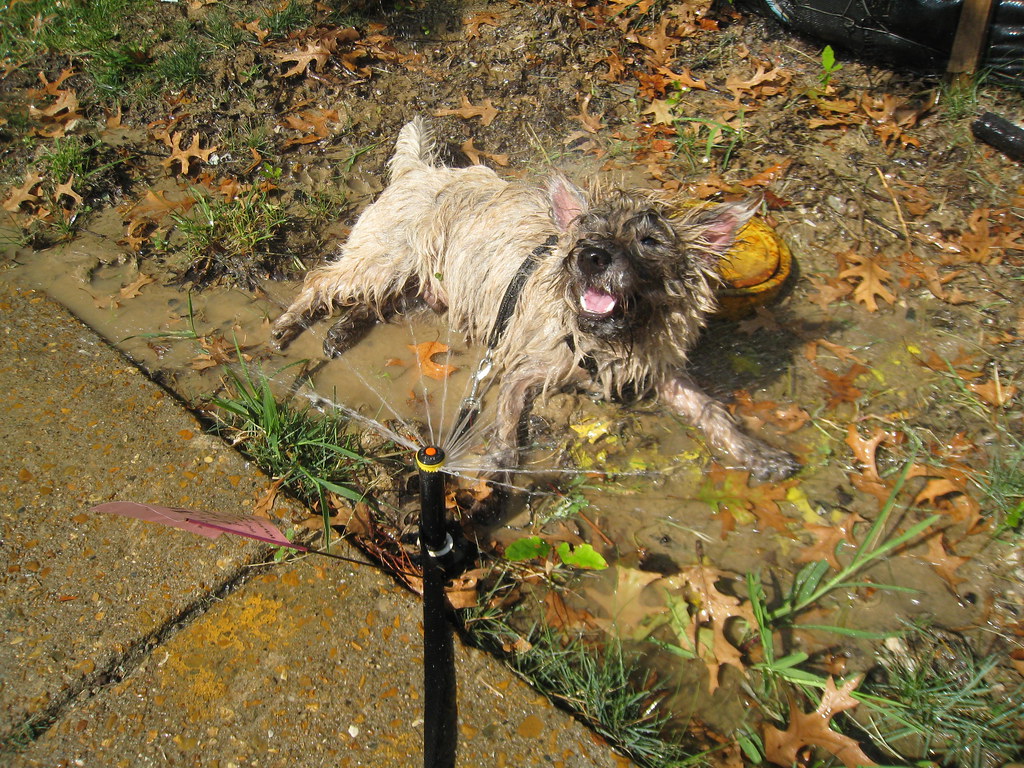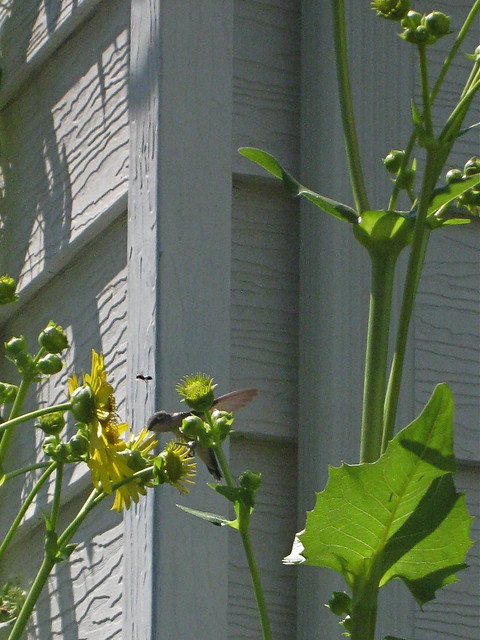When Chunk and I take our walk through the neighborhoods and down to the park, I sometimes keep count of the number of species we see: 12-22 birds (depending on how long the walk; highest number in spring), and usually only 2 mammals— Eastern Gray Squirrel (always), and either Eastern Cottontail or Eastern Chipmunk. Chunk is more of a mammal-watcher than a bird-watcher and recently he's been pushing the mammal species total upward.
At first, I assumed these holes were the entrances to chipmunk tunnels, but they were too small: only 1 1/4 to 1 3/4 inches (3.17-4.45 cm) in width. There were many on them too on the gentle slope by the cemetery fence; I knew there couldn't be that many chipmunks in the small area. Then I spotted one. It looked like a small, grey mouse, with a rounded head. As you can see from my one-handed snapshot above, Chunk didn't wait to see it—he dove right in! Never fear, my fellow critter-lovers, I didn't let him catch one.
I suspected voles, so first I checked Mark Elbroch's Mammal Tracks & Sign; A Guide to North American Species, 2003. This is really a fascinating book, filled with photos, though some of the mammal signs are, well, unattractive. Elbroch confirmed that the holes were within the range of voles.
The pathways through the dry grass and winter creeper seemed significant signs too.
 |
| Prairie Vole, photo from Wikimedia Commons, by US National Park Service |
Mammal watchers might also enjoy:
 |
| Mountain Lion, St. Louis |
 |
| What are ya usin' for bait? |
 |
| Charismatic Megafauna |
 |
| Walk on the Wild Side |



